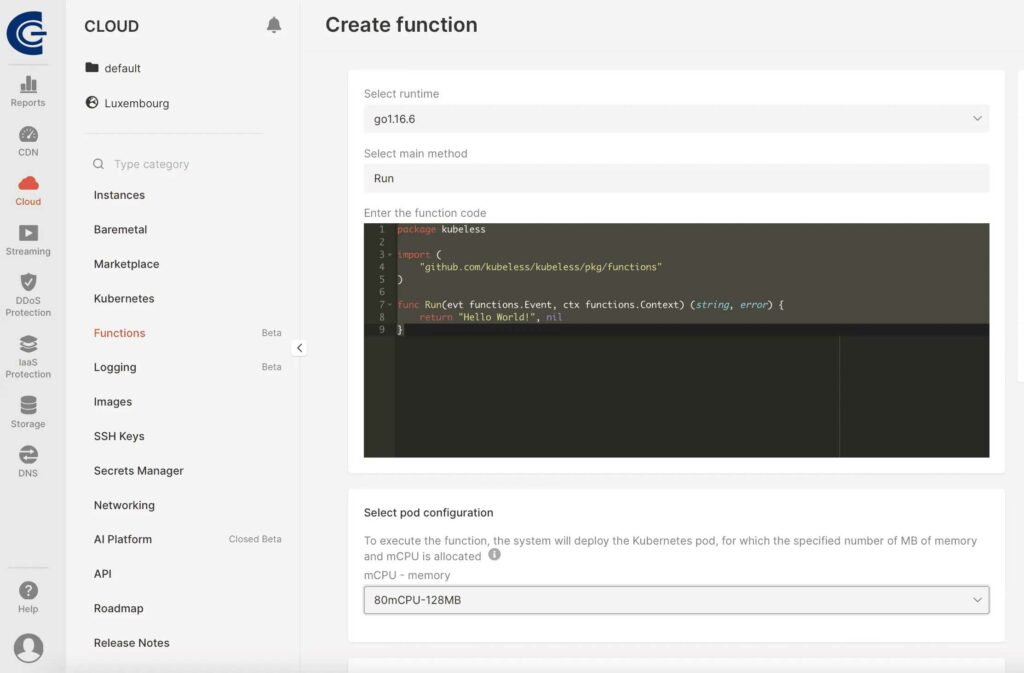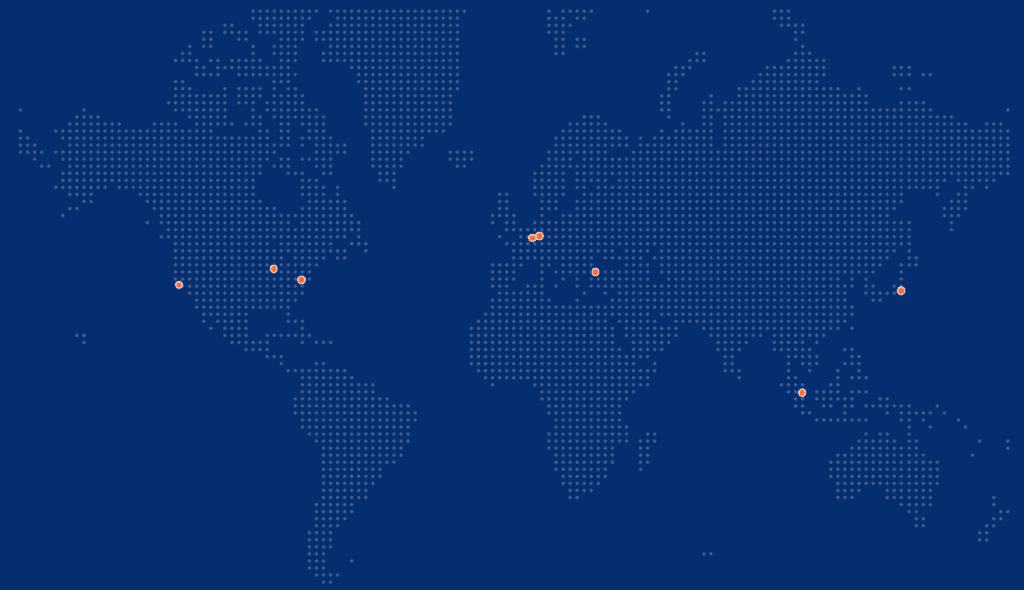Function
as a service
Run code as a function without creating and maintaining virtual machines.
FaaS makes it easier to run code
Function as a Service (FaaS) is a cloud-based, serverless computing service that allows developers to run and update code in a ready-made environment without the need to create and maintain virtual machines.
The use of FaaS accelerates the development process and simplifies the design of a microservice architecture.

How FaaS Works
FaaS is often used to extend the functionality of applications by creating its own microservices via HTTP API or integrating third-party services via Webhook.
Example use cases

Serverless mobile back ends

Real-time file processing

Automate DevOps processes
Serverless IoT backends
Real-time stream processing
Advantages of Computer.Com Cloud FaaS
Automated scaling
As the number of requests increases, your functions automatically adjust to the load.
DDoS protection
By default, all projects in the cloud are protected against attacks at the network and transport layers.
Tier III and IV data centers
Our servers are located in the most reliable and fault-tolerant data centers.
Professional 24/7 technical support
We provide 24/7 expert assistance in activating and configuring the service.
Free outgoing traffic
Only incoming requests are billed.
FaaS locations

Pricing
Function as a Service (FaaS) is charged based on the duration pods are allocated to run your code.
Frequently Asked Questions
FaaS is a cloud service that allows you to run code without the need to design and maintain a runtime environment. The entire server part is divided into functions that are activated when a certain event occurs (for example, when an HTTP request is received).
As a result, FaaS allows you to focus entirely on development without worrying about infrastructure management.
This is the basis of FaaS, a method of providing cloud services in which computing resources are automatically adjusted to your load. You do not have to rent virtual instances and physical servers or determine the required capacities by yourself. The necessary amount of resources will be allocated to you automatically, and when some instances are no longer needed, they will also be automatically deleted.
In serverless computing, the provider’s area of responsibility includes adding, removing, monitoring, and other operations with virtual and physical instances. You write and update the code, and the IT infrastructure adjusts itself to your needs.
Functions are perfectly suited to a microservice architecture. Changing the code of independent application components becomes even easier with them. All modifications are made on the fly without stopping the application. At the same time, you do not need Docker or Kubernetes. We take care of container management as well.
Moreover, FaaS is a great solution if it is crucial for you to release a product as quickly as possible. FaaS significantly speeds up the launch process by eliminating the need for your team to spend time managing the infrastructure.
It is also great for solving the scaling problem. FaaS will be the right fit if the load on your applications fluctuates sharply and you have frequent traffic surges. Computing capacity will increase and decrease automatically.
With FaaS, the infrastructure automatically adjusts to your needs. Only the computing power that is needed at the moment is used. Therefore, no resources stand idle, and you only pay for the capacities that you actually use.
Python, Go, and other popular programming languages soon.
Computer.Com Cloud has passed the PCI DSS and ISO 27001 certification. This means that all data in our Cloud is protected from unauthorized access and modification.
DDoS protection is available for all Cloud clients by default. We also protect all your data from loss using three-factor SAN replication and disaster recovery.
When you set the minimum number of pods in the autoscaler settings to a value greater than 1, the configured number of minimum pods is billed continuously as the service keeps them active 24×7.
When you set the minimum number of pods in the autoscaler settings to 0, you are not charged until the first request is made to the service.
If you specify a specific number of seconds for the pod lifetime, the system automatically deletes the pods after that duration.
Downsizing the number of pods takes some time, potentially up to 1 minute in the worst-case scenario. This time is also included in the pod lifetime and billed accordingly.
The pod lifetime is billed in seconds, and any fractional seconds are rounded to the nearest whole second.
Each pod configuration with different mCPU and RAM specifications is charged based on a unified price per gigabyte (GB) of RAM per second.

